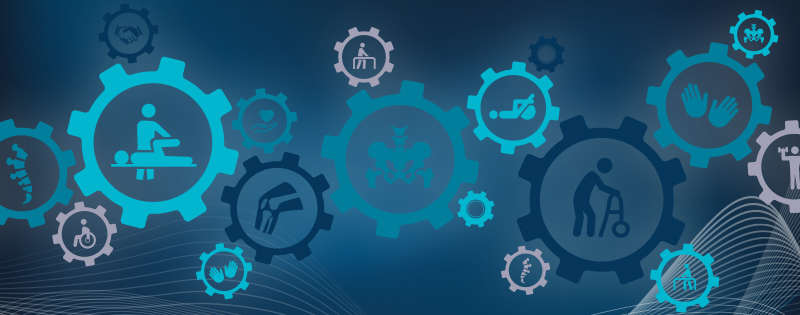by Brent Hearn •
What comes to mind when you think of a chiropractic appointment? The answer may largely be dependent upon how recently you’ve been treated—or if you’ve ever been treated—by a chiropractor.
Popular culture tends to portray chiropractic as primarily (or perhaps even solely) a “hands-on” field. Patients go to the chiropractor “for an adjustment” or “to get their neck cracked.” Of course, these portrayals are grounded in fact, but they’re incomplete and fail to take into account the vast array of treatments at a chiropractor’s disposal, particularly these days.
Those who haven’t been treated in the last few years might be surprised to find just how far the field has progressed from a technological standpoint. There’s still a hands-on aspect, to be sure, but more traditional methods are now complemented by high-tech diagnostic and treatment capabilities. Here are just a few of the modern tools chiropractors have at their disposal.
Ultrasound
When most people hear the word “ultrasound,” they think of expectant mothers. The uses of ultrasound technology go far beyond fetal imaging, however. It’s a versatile tool that has uses in chiropractic as well. Sound waves provide a form of deep heat therapy that gently massages tissue and joints. Ultrasound can help to reduce pain, swelling, and chronic inflammation, in addition to promoting healing and increasing blood flow.
Scanning Technology
In any healthcare field, there’s a certain amount of trial and error involved in patient care. This doesn’t mean your providers are shooting in the dark, of course. Our bodies are complex machines, and it can take time to arrive at the correct diagnosis and course of treatment.
Advances in scanning technology are helping chiropractors reduce uncertainty when it comes to diagnosing and treating their patients. For example, INSiGHT instruments and software scan a patient’s heart rate variability, electromyography, and thermography and generate reports based on these findings. A chiropractor can use that data to diagnose patients more quickly and more accurately, reducing the guesswork involved. (If you’re a Star Trek fan, just think of it as an early-era tricorder. If you’re not, carry on about your day—and rethink your choices.)
Cold Lasers
Cold laser therapy—also referred to as low-level laser therapy (LLLT)—is a non-invasive procedure that uses wavelengths within the visible light spectrum to treat a variety of ailments. Cold lasers can help to reduce pain, inflammation, and recovery time, and they can do it without painful side effects. That said, it’s not a one-stop solution; it may take a number of LLLT treatments for a patient to receive the full benefits of the technology.
These are just a few of the myriad of tools at a chiropractor’s disposal. After an examination, your chiropractor will decide on diagnostic and treatment plans that best suit your needs. Don’t hesitate to initiate a discussion with your chiropractor about the various methods and technology they’re using to treat their patients. They’ll likely be happy to discuss it, and you’ll learn something new! (Hard to beat getting an education and an adjustment, right?)
Sources:
https://electronichealthreporter.com/what-to-know-about-evolving-tech-in-chiropractic-care/
https://getreferralmd.com/2019/11/3-technologies-transforming-chiropractic-care/
https://insightcla.com/insightsynapse/
https://loehrhealth.com/how-does-ultrasound-therapy-work/
https://www.spine-health.com/treatment/chiropractic/chiropractic-services-beyond-adjustments
https://www.spine-health.com/treatment/pain-management/cold-laser-therapy-pain-management-treatment









 ▶︎
▶︎  Why is the Discount Challenge prize amount $15,024? Because that is the average “per-occurrence” fine for Medicare inducements. That’s not $15,024 per patient, that’s not per provider, that’s PER VISIT. Stinks, doesn’t it? To us, the prize amount is worth the investment if we can help our profession better understand proper discounting.
Why is the Discount Challenge prize amount $15,024? Because that is the average “per-occurrence” fine for Medicare inducements. That’s not $15,024 per patient, that’s not per provider, that’s PER VISIT. Stinks, doesn’t it? To us, the prize amount is worth the investment if we can help our profession better understand proper discounting.